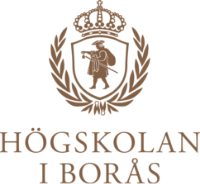Ny publikation från Handelsgruppen (Sirilertsuwan, P., Hjelmgren, D. and Ekwall, D. (2019))
Sirilertsuwan, P., Hjelmgren, D. and Ekwall, D. (2019), "Exploring current enablers and barriers for sustainable proximity manufacturing", Journal of Fashion Marketing and Management: An International Journal, Vol. ahead-of-print No. ahead-of-print.
Abstract
Purpose
Amidst offshoring and reshoring trends, the purpose of this paper is to explore why business practitioners, especially from the labour-intensive clothing industry, choose to manufacture some products in proximity to the high-cost European market. Moreover, the rise of sustainability concerns led us to further explore whether these reasons relate to triple bottom line (TBL): business, environment and society.
Design/methodology/approach
The content analysis was adopted for within-case and cross-case analysis of data from semi-structured interviews of managers from 12 clothing companies.
Findings
Within-case analysis showed enablers and barriers (factors) of proximity manufacturing within each company’s characteristics under TBL. Cross-case analysis showed the most-mentioned enablers (high-quality suppliers, short lead-time and fast replenishment) and barriers (expensive production cost and lack of industrial set-up and seamstresses). The findings revealed both common and different factors from existing studies.
Research limitations/implications
Besides being motives for companies to bring manufacturing back to Europe, the results can be used by researchers and companies to develop criteria and performance measures of manufacturing locations for enhancing the TBL sustainability. Future research may explore different locations and industries for possibilities of proximity–manufacturing generalisation. Social implications Findings show that governments could focus on eliminating barriers of proximity manufacturing and creating favourable institutional infrastructure for the European clothing industry and sustainability.
Originality/value
This paper highlights updated proximity–manufacturing factors from practices in relation to TBL sustainability, including support for proximity manufacturing as a practice for TBL enhancement.

